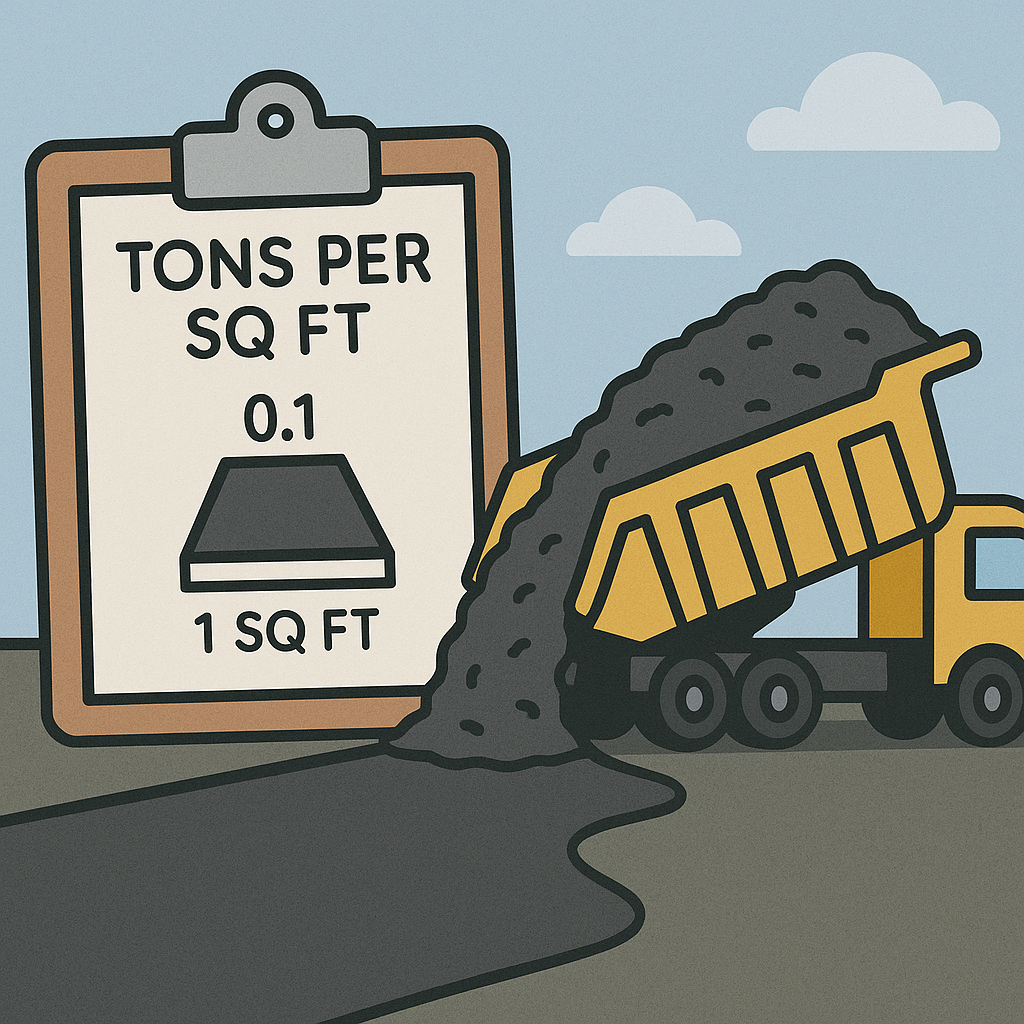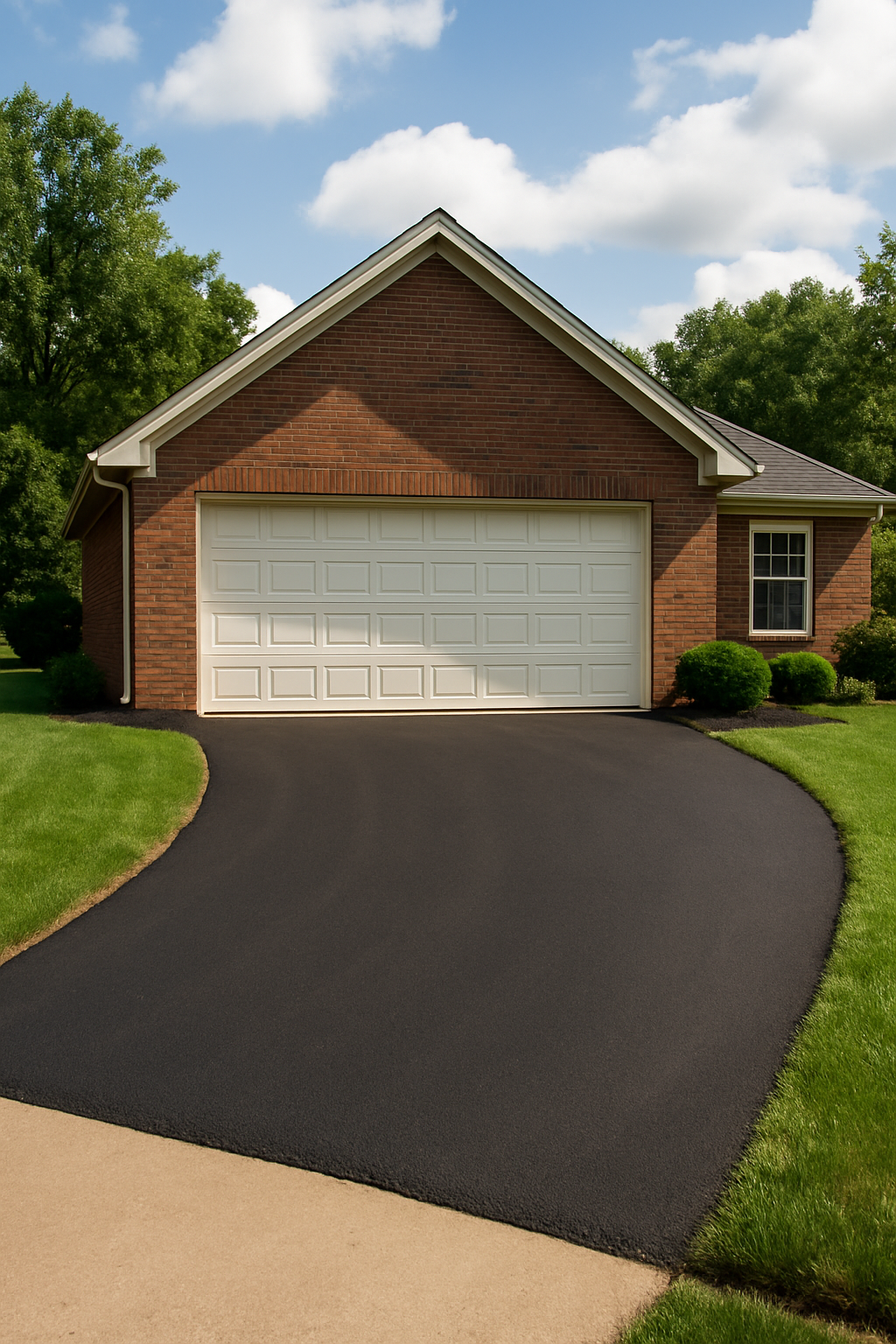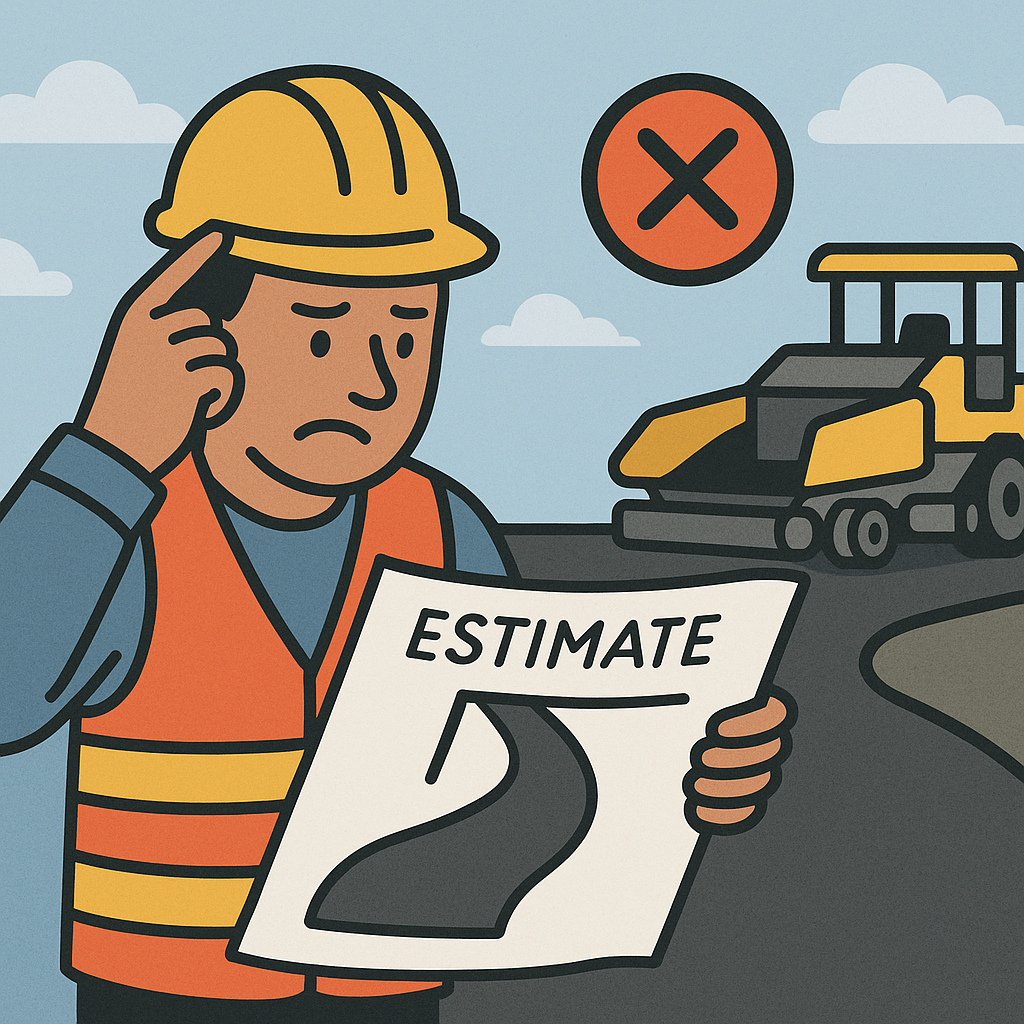Density Formula
How Many Tons of Asphalt Per Square Foot?
If you're planning an asphalt project, accurately calculating material needs is crucial for budgeting and ordering. This comprehensive guide provides a reliable formula and practical examples based on standard asphalt density to help you determine exactly how many tons of asphalt you'll need for your specific project dimensions.

Understanding Asphalt Density
Asphalt has an average density of 145 pounds per cubic foot when compacted. This density can vary slightly based on the specific mix design and aggregate used, but 145 lb/ft³ is the industry standard for estimation purposes. Using this constant in your calculations ensures you'll have sufficient material for your project.
The Tonnage Formula Explained
Converting square footage to tons requires accounting for both area and depth. Here's the standard formula used by contractors and engineers:
The Basic Formula:
Tons = (Square Feet × Depth in Feet × 145) ÷ 2000
Where:
- Square Feet = Length × Width of the area to be paved
- Depth in Feet = Thickness of asphalt (convert inches to feet by dividing by 12)
- 145 = Standard density of asphalt in pounds per cubic foot
- 2000 = Number of pounds in a ton
Practical Examples
Example 1: Residential Driveway
For a driveway measuring 500 square feet with a 3-inch (0.25 feet) depth:
Tons = (500 ft² × 0.25 ft × 145) ÷ 2000
Tons = 18,125 ÷ 2000
Tons = 9.06 tons
Example 2: Commercial Parking Lot
For a parking lot measuring 10,000 square feet with a 4-inch (0.33 feet) depth:
Tons = (10,000 ft² × 0.33 ft × 145) ÷ 2000
Tons = 478,500 ÷ 2000
Tons = 239.25 tons
Common Depth Conversions
For quick reference, here are common asphalt depth measurements converted to feet:
- 2 inches = 0.167 feet
- 2.5 inches = 0.208 feet
- 3 inches = 0.25 feet
- 3.5 inches = 0.292 feet
- 4 inches = 0.333 feet
- 5 inches = 0.417 feet
- 6 inches = 0.5 feet
Accounting for Waste and Compaction
In real-world applications, it's wise to add a 5-10% buffer to your calculated tonnage to account for waste, spillage, and variations in compaction. This ensures you won't run short of materials during installation, which could lead to costly delays and visible seams in your finished surface.
Choosing the Right Depth
The appropriate asphalt depth varies depending on your project type and expected usage. For guidance on selecting the optimal thickness for your specific application, refer to this depth guide, which provides recommendations based on traffic load and climate conditions.
Need a Faster Solution?
Skip the manual calculations and use the asphalt calculator to instantly determine your material needs. For a deeper understanding of square footage calculations, explore this square footage guide.
To estimate the cost of your project once you know the tonnage required, check out this pricing guide or use the project cost calculator for a comprehensive budget estimate.



